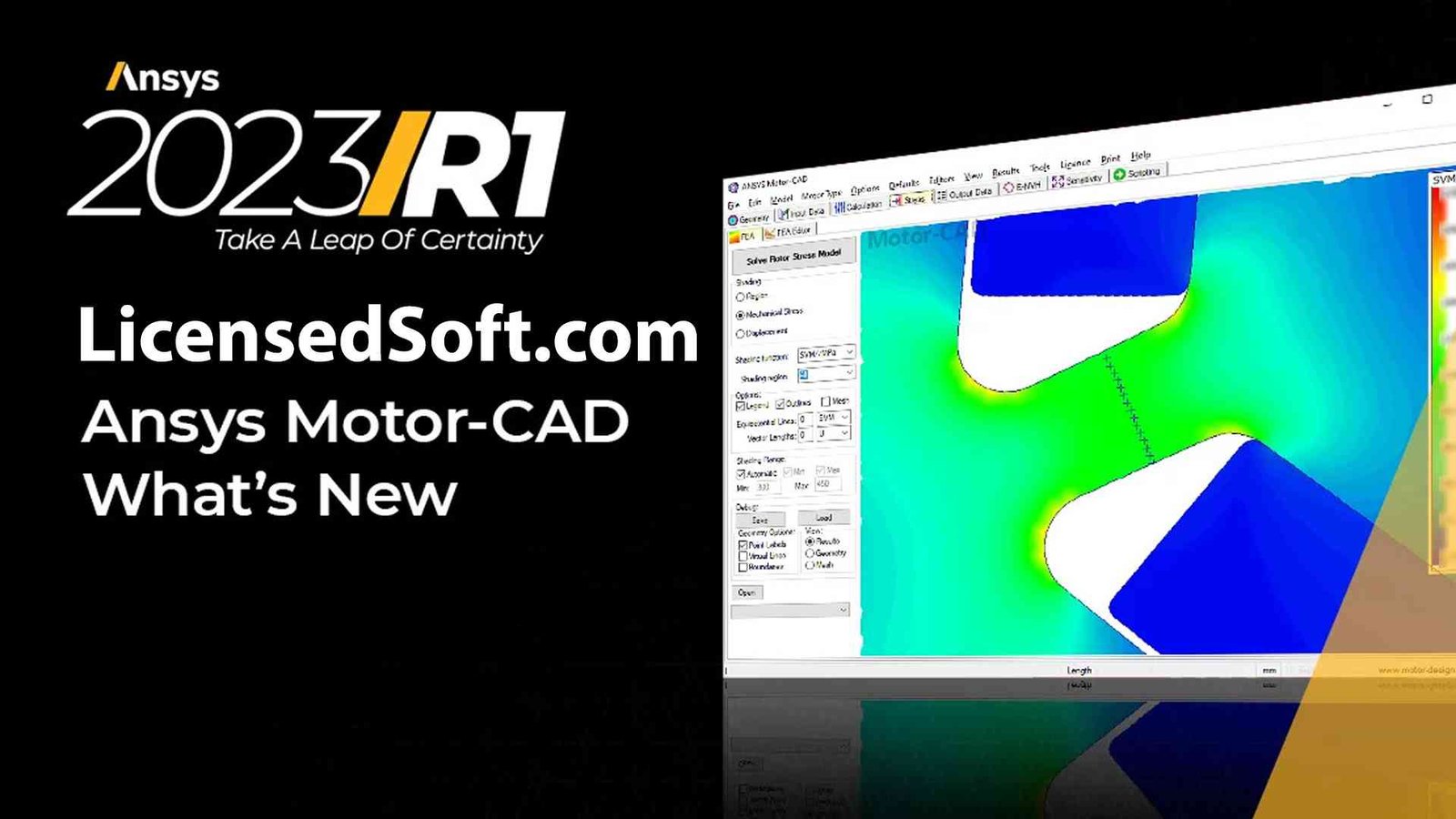Ansys Motor-CAD 2023 version is a dedicated electric motor design tool that can used for fast multiphysics simulation over the entire torque-speed operating range. Designing an electric motor requires a comprehensive understanding of the impact that different technologies may have on motor quality, performance and cost – ideally early in the design process, when design options are still open and the cost of change is low. Electromagnetic, thermal and mechanical analysis can easily performed with this software. This enables the evaluation of motor topologies and concepts across the entire operating range to generate designs optimized for performance, efficiency and size. Motor-CAD software’s four integrated modules (EMag, Therm, Lab and Mech) allow fast, iterative execution of multiphysics calculations, so users can go from concept to final design in less time.
ANSYS Motor-CAD 2023 New Features:
1. Conduct detailed multiphysics analysis from the very beginning of the design process.
Motor-CAD’s fast calculations, embedded expertise and practical design methodology allow comprehensive multiphysics analysis from the very beginning of the design process. Our integrated physics modules and extensive machine templates allow users to try out different motor topologies, explore the entire design space and iterate quickly.
2. World-renowned software support and continuous development of new features.
Our team consists of design engineers and expert software developers who are constantly developing new features to keep up with technological advancements and meet user needs. We are also active in many international research projects, which help us to predict trends and stay ahead of Motor-CAD users.
3. Is there an existing workflow? Easily integrate Motor-CAD.
We have partnerships with many major commercial software developers to ensure Motor-CAD works seamlessly with other tools. You can also get ANSYS Products 2023 R1 from LicensedSoft.
4. Industries: from automotive to academia.
Motor-CAD is used in a variety of complex systems such as hybrid/electric vehicles, aircraft engines, wind power generation, submersible pumps, hermetic compressors, conveyor rollers, and racing cars. We have an excellent track record of delivering value for money, applying engineering expertise and software tools to design products for a variety of applications.

ANSYS Motor-CAD 2023 New Functions
1. Design optimization
Motor-CAD can used as an integral part of the design process. A truly optimal design can achieved by optimizing the electromagnetic model in parallel with the thermal circuit and mechanical design. Often, thermal design aspects persist until the end of the design process, at which point it is too late to change the design and a substandard motor will produced.
2. Quick response to customer inquiries
Customers often want to use an existing motor for a given application with specified load characteristics. Through its duty cycle analysis capabilities, Motor-CAD can used to quickly model load specifications. The designer then has a clear idea of whether the motor/drive combination is adequate for the task and whether the customer feels secure that the designer can fully investigate his inquiry and thus help win the order.
3. Quickly quantify design changes
Sometimes a change in material or manufacturing process may suggested. Motor-CAD allows designers to quickly quantify the impact of such changes on motor performance
4. Program Verification
Motor-CAD calculations of motor performance can easily compared with tests on existing motors. In doing this verification. The user has a solid understanding of the main parameters that affect the performance of the machine. So this knowledge can used to improve the design.
5. Parameter estimation
It is often difficult, if not impossible, to directly measure certain key parameters that affect motor performance, for example. Interface clearance, rotor loss. In many cases, these parameters can estimated by matching Motor-CAD output with easily measured data, such as component temperature, stator losses. For example, the interface gap between the stator laminations and the housing can varied until it matches the measurements of T[stator] and T[housing].
6. Sensitivity analysis and robust design
It is very easy to change input parameters and check the effect on machine performance, temperature distribution, etc. Sensitivity analysis can used for parameters such as dimensional tolerances. Material properties, impregnation goodness, interfacial gaps, etc. and plot the changes in machine performance. This can used to understand which critical design variables are in the machine. It can also extended to form part of a system model for robust design techniques such as 6-Sigma. The entire calculation process, as well as changes in related parameters. Can automated using ActiveX technology or built-in sensitivity analysis tools.


